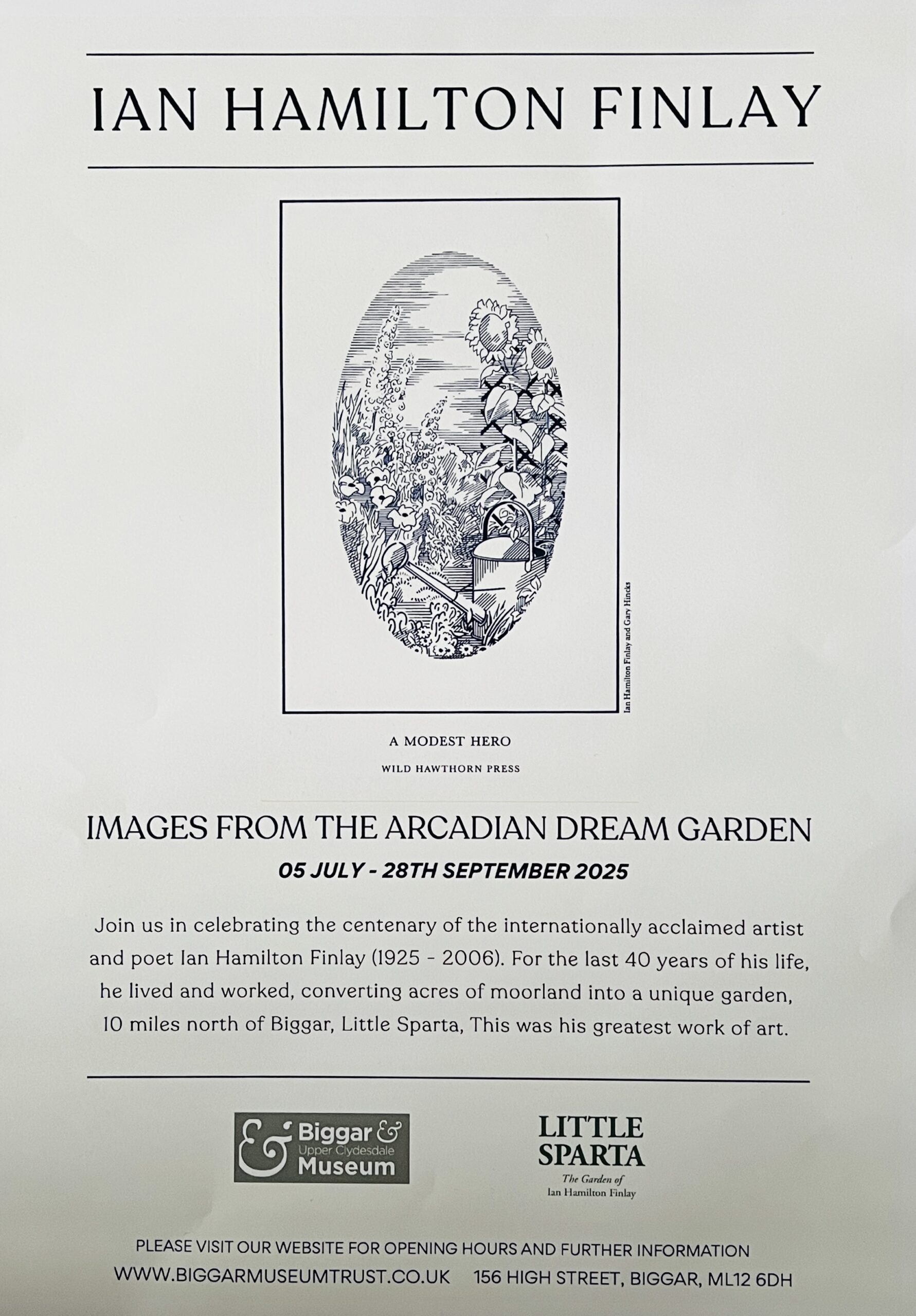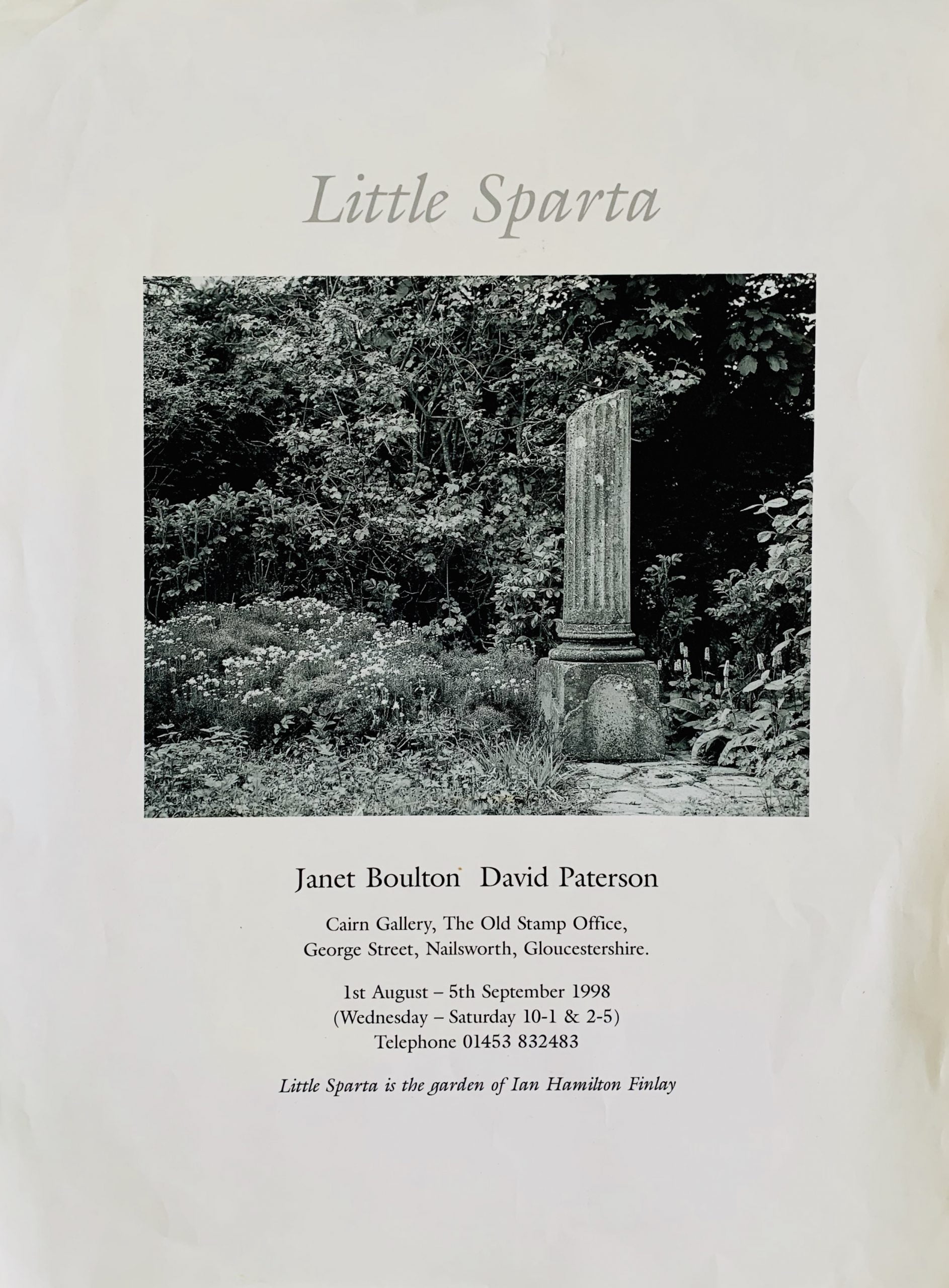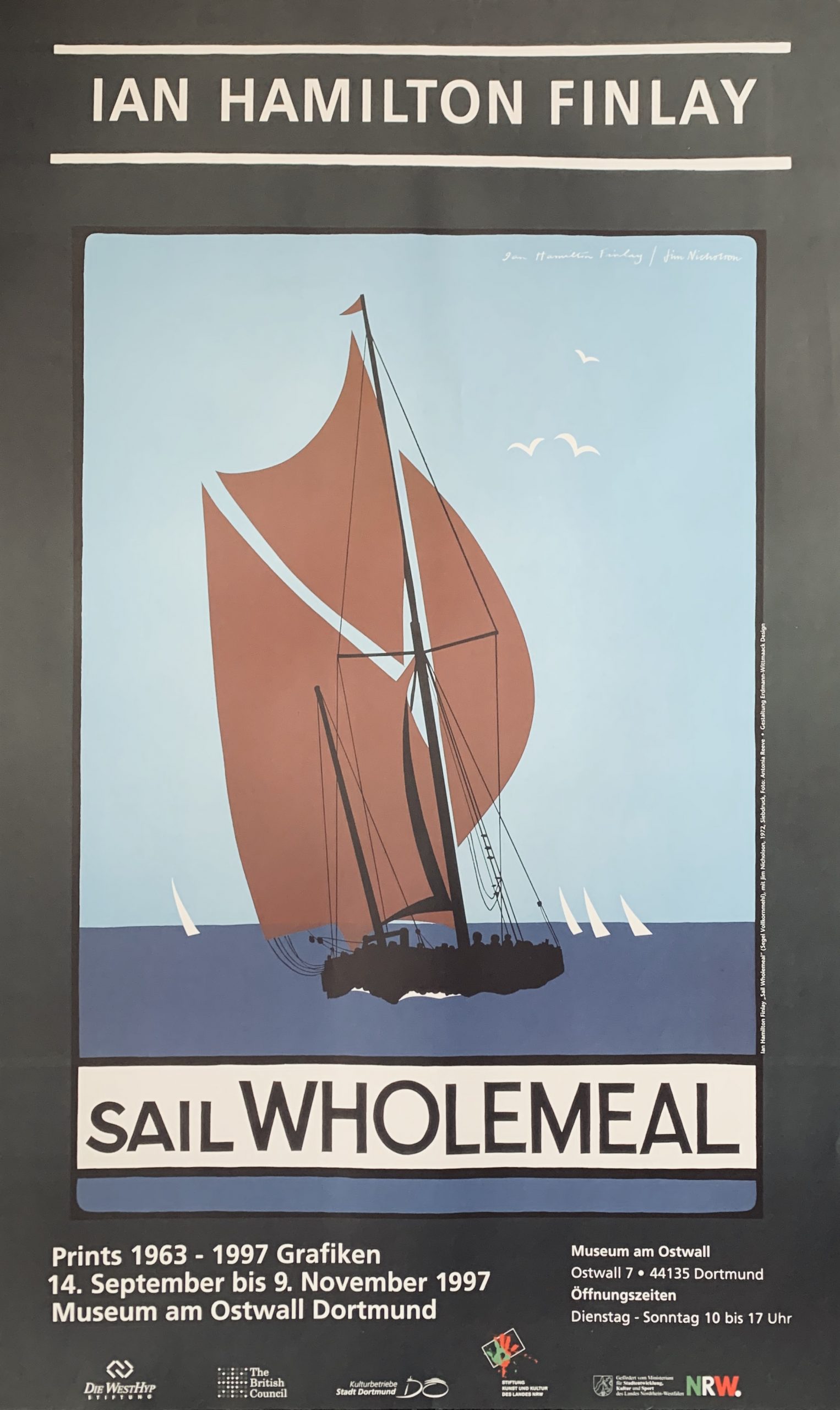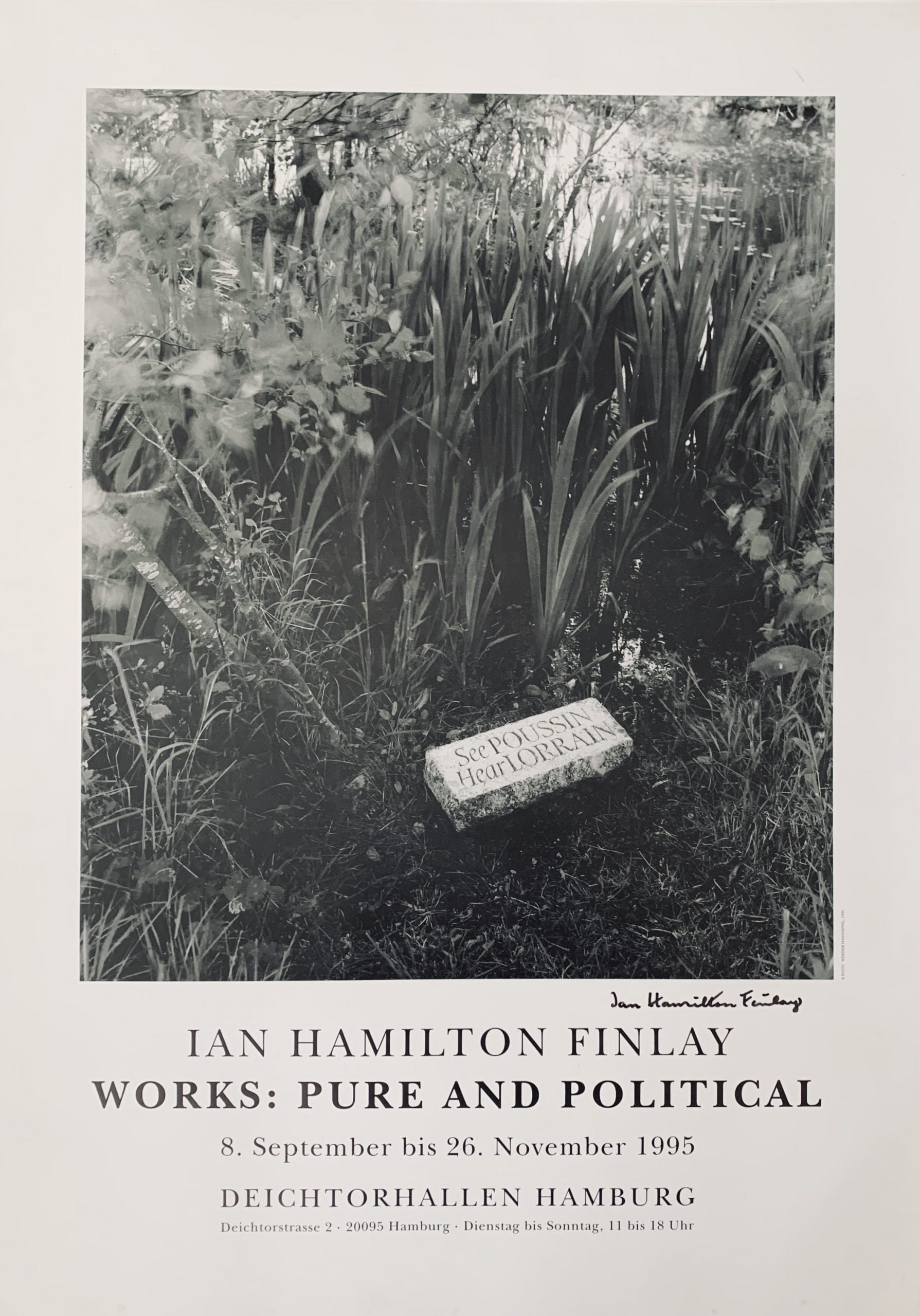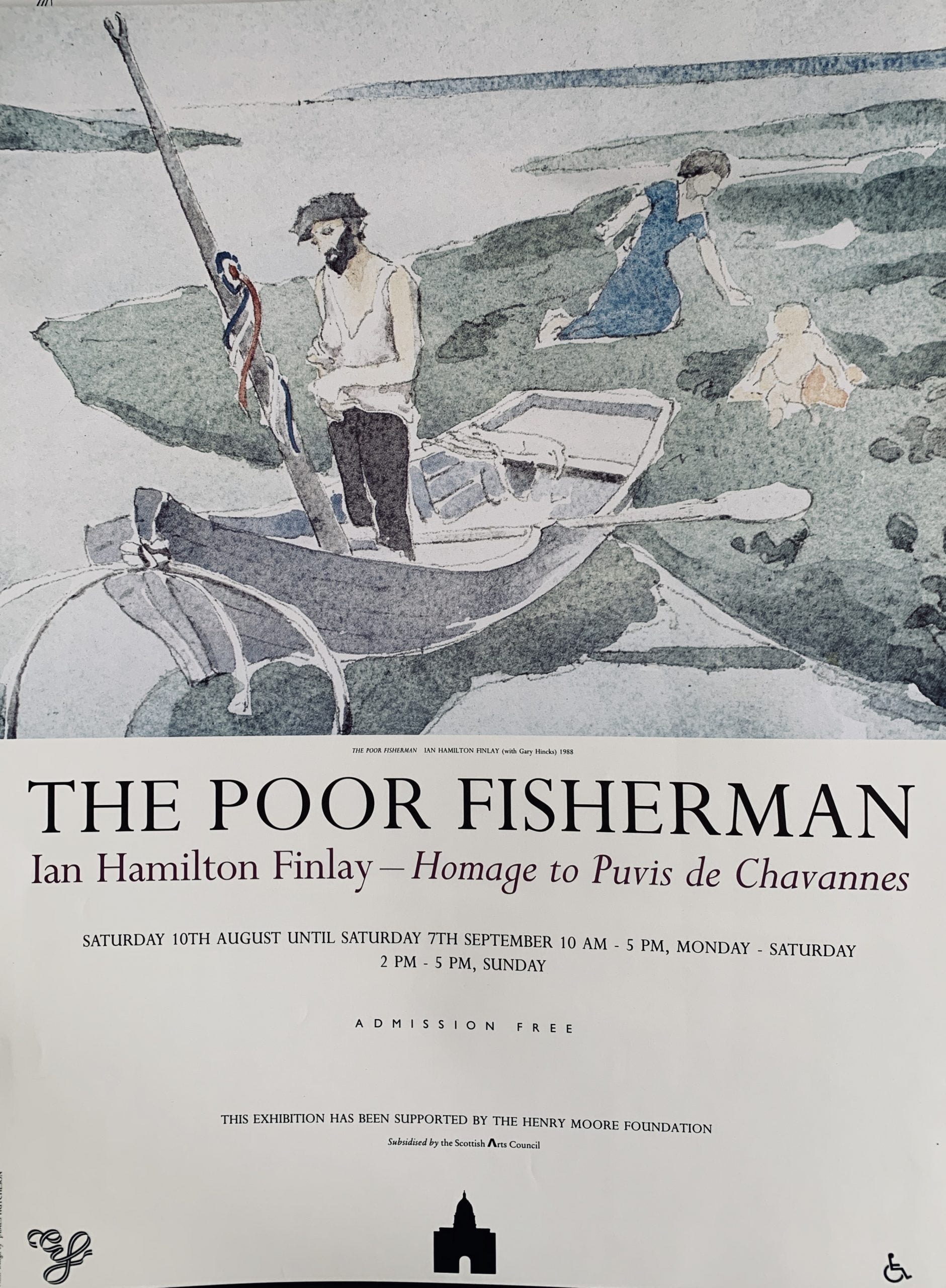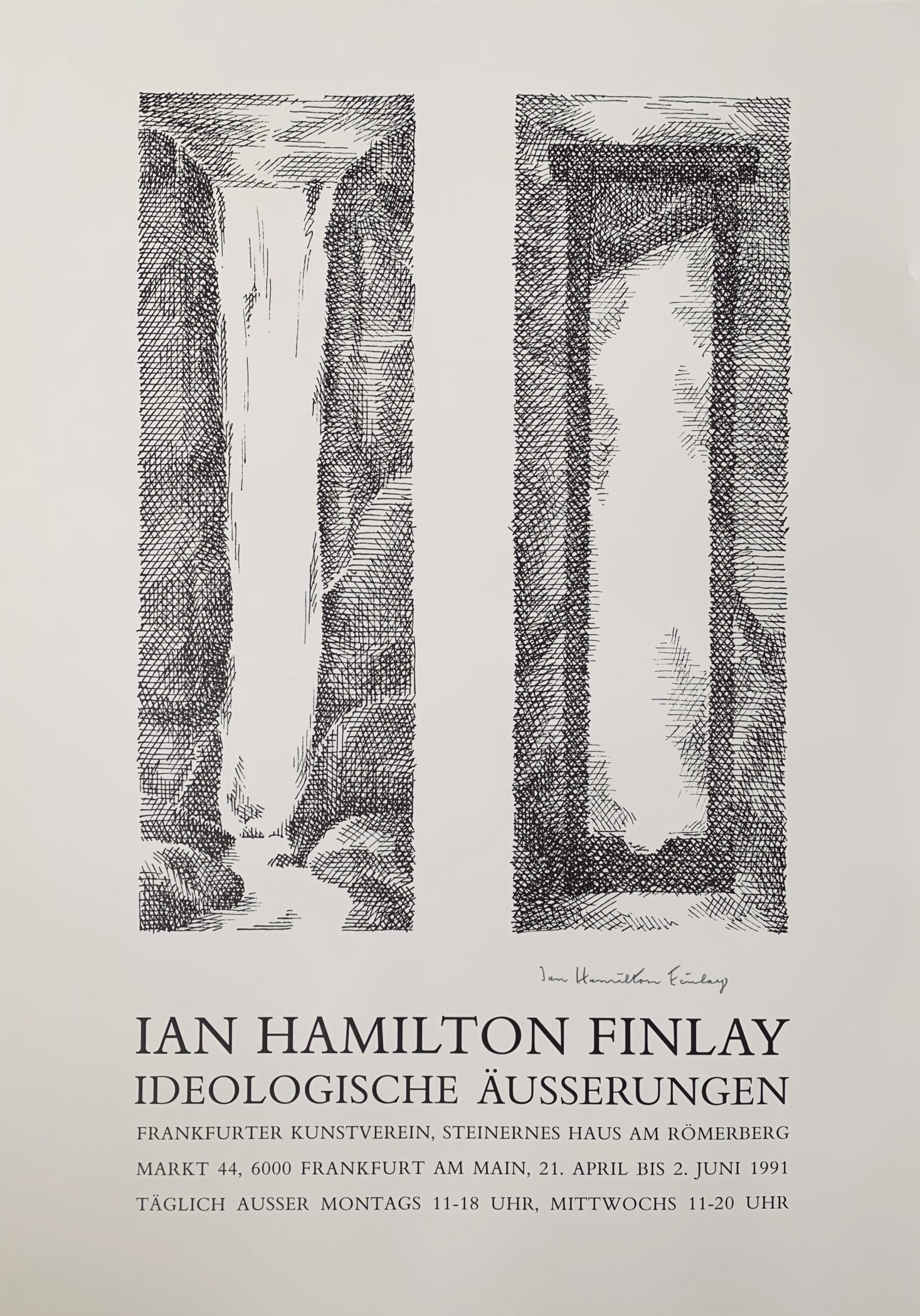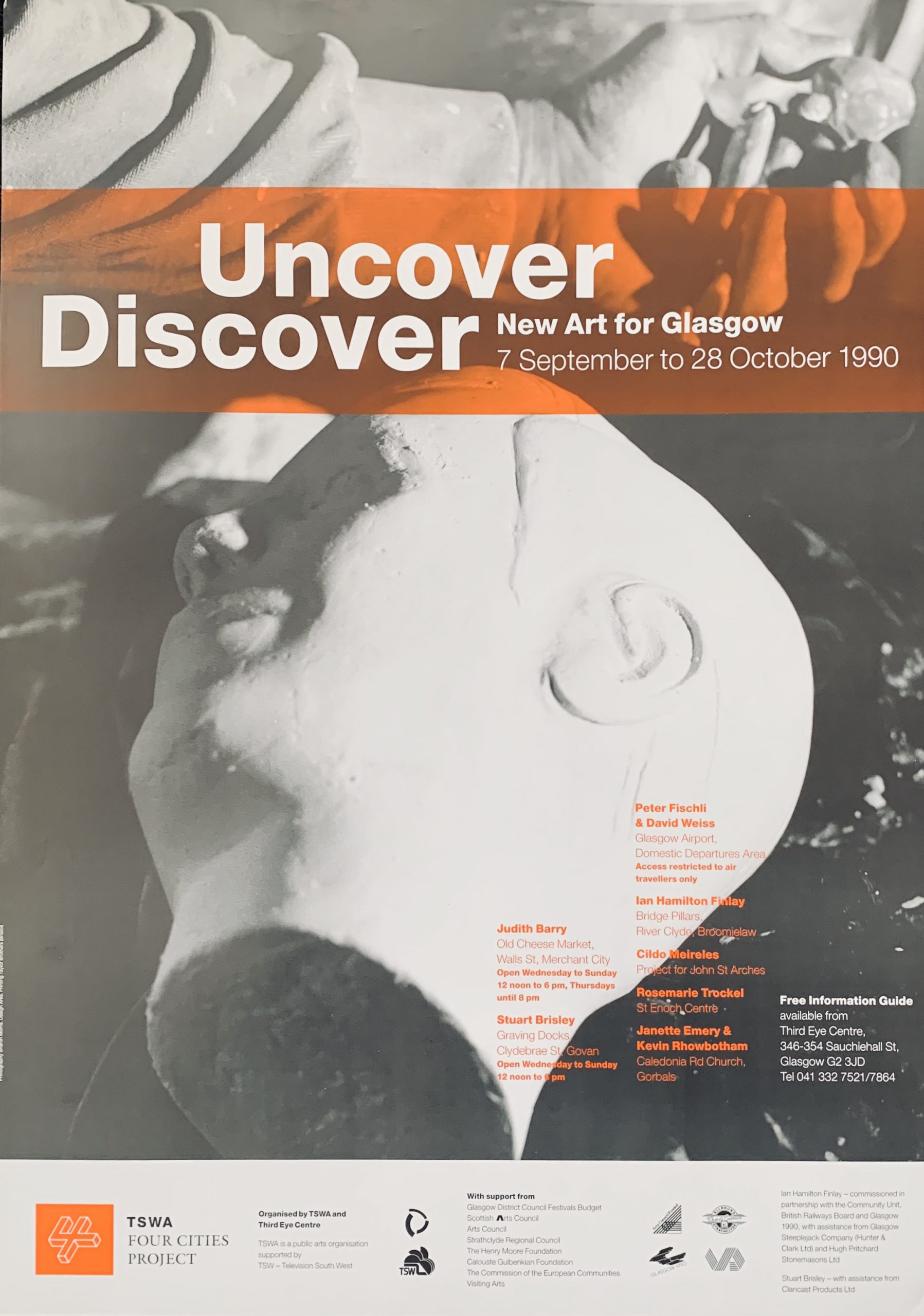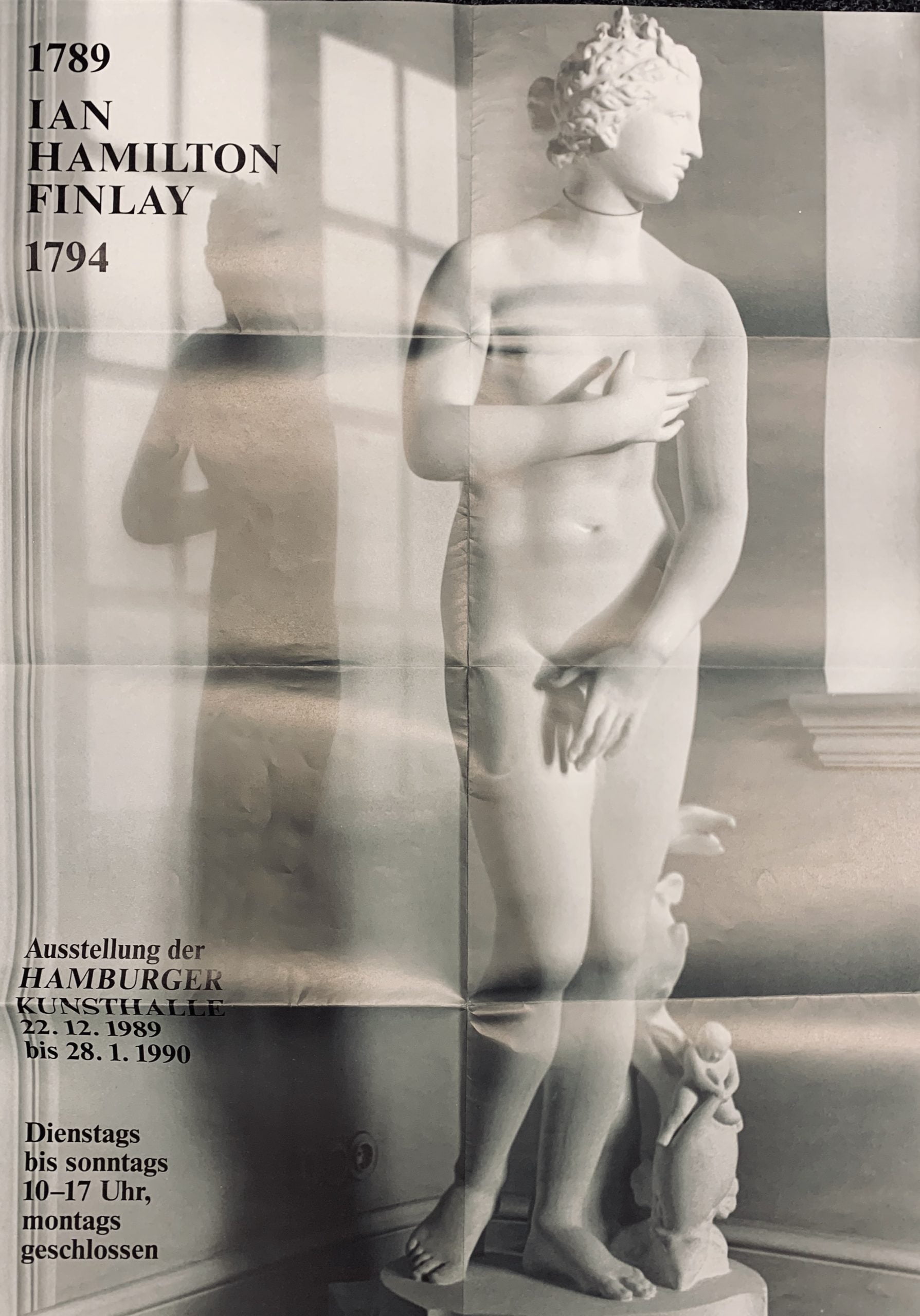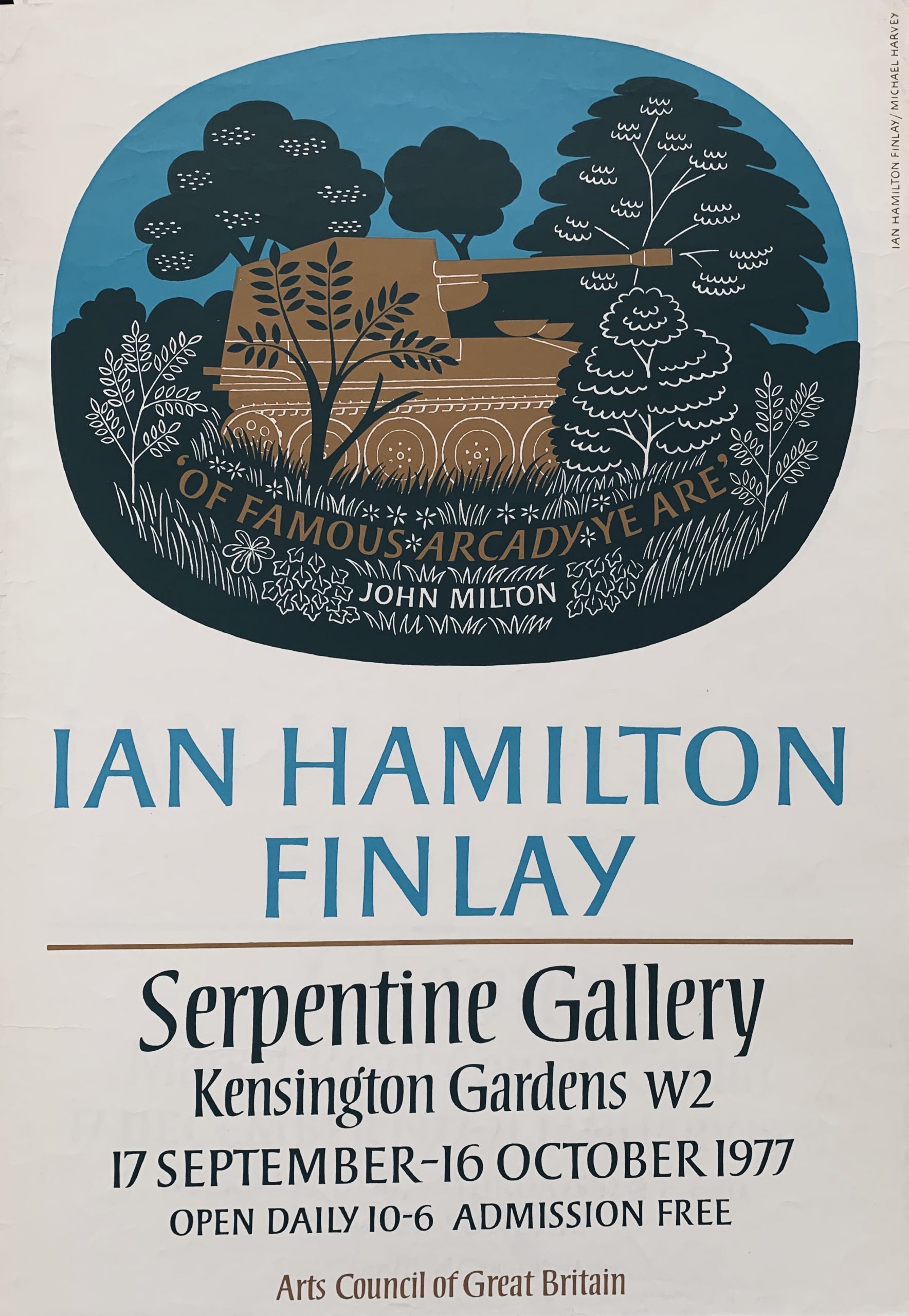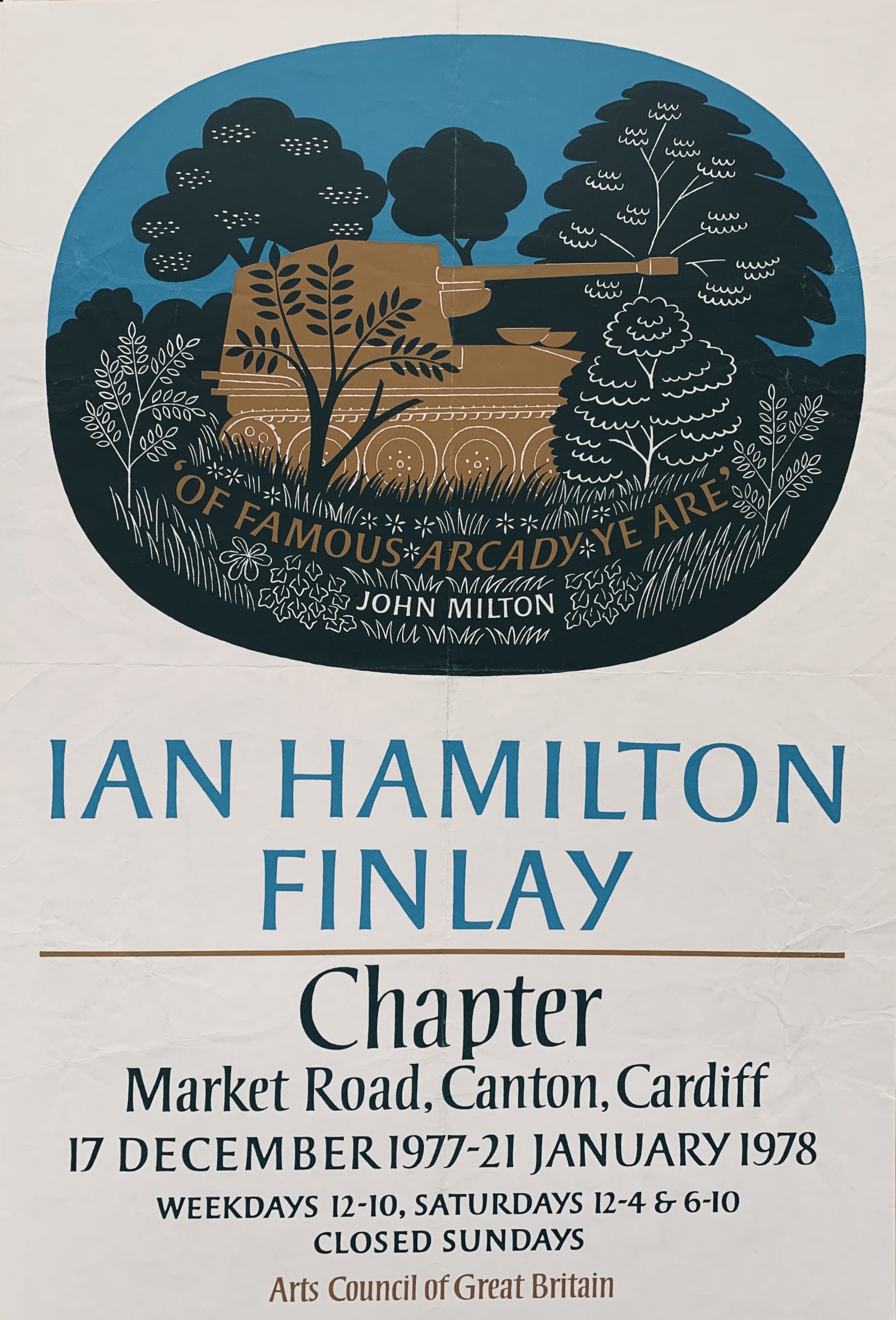Cambridge: Kettle's Yard, 1975
60 x 42cm, olive green and black on white offset lithograph. The line drawing by Ron Costley is a copy of the outline of the original Bernini sculpture of the gods.
There is a text beneath the image: ‘APOLLO AND DAPHNE/ after Bernini/BIBLIOGRAPHY - Ovid, “Metamorphoses”; Rudolf Wittkower, “The Sculptures of Gian Lorenzo Bernini”; Historical Research Unit, Vol. 6, “Uniforms of the SS”’.
The classical story of the pair is one of desire - Apollo being consumed by lust for Daphne (thanks to Eros messing with his motivation) and Daphne desiring to remain chaste (Again this is down to Eros). When Apollo did manage to catch Daphne (presumably with rape his intent) Daphne's father Peneus turned her into an laurel tree - hence saving her virginity.
The Tate Gallery website claims Finlay explained that "the gods and nature ‘were behaving not unlike the Waffen SS’ (who were the first to use a smock with a leaf camouflage pattern, hence its identification with them).
This poster, in which Daphne is wearing a camouflage smock which replaces ‘nature’, was the poster for the title exhibition at the Cambridge Poetry Festival in 1977. It is the same image as in the print APOLLO AND DAPHNE. AFTER BERNINI. 1975 but with exhibition details added at the bottom. Slight crease top right else VG.
...

